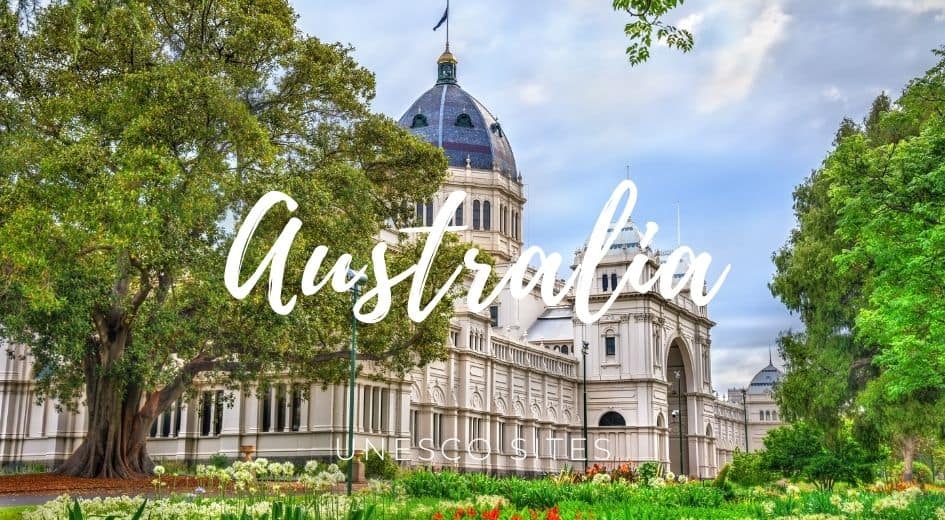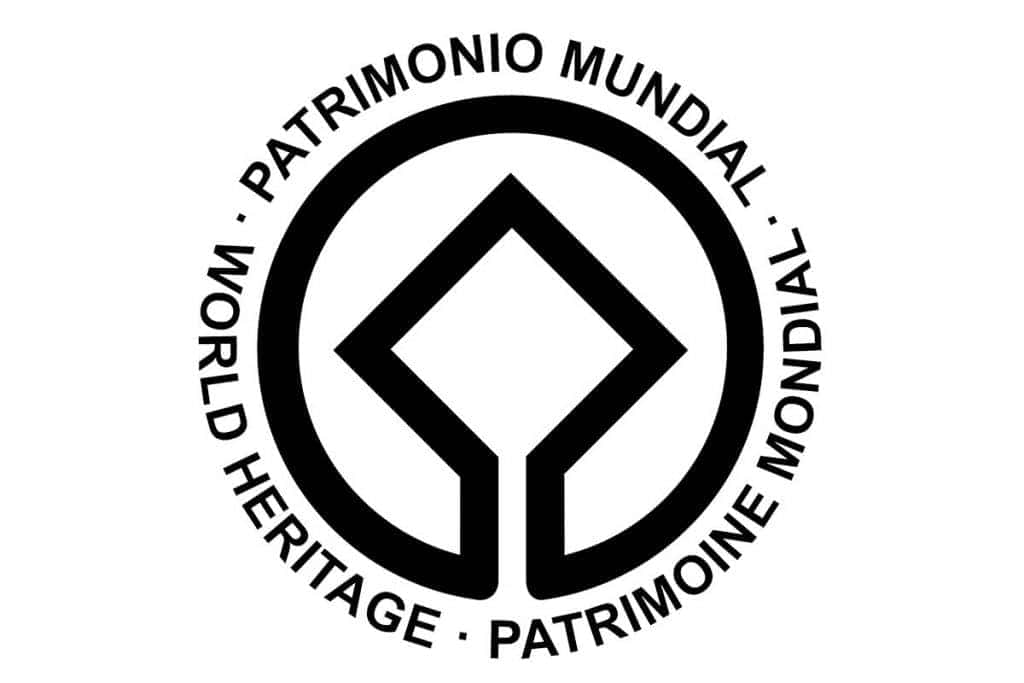Table of Contents


Australia UNESCO has registered 20 sites on the World Heritage list and 4 on the tentative list.
Some places are so interesting that it’s relevant to keep them for future generations. This is why UNESCO has built a list of crucial classified properties in which superb places stand out for their aesthetic, natural, artistic, or cultural significance.
More than a thousand places are registered as Unesco’s World Heritage worldwide. Due to my interest in visiting World Heritage sites, I compiled the UNESCO list in Australia and the corresponding map.
Australia UNESCO list
- Australian Convict Sites
- Budj Bim Cultural Landscape
- Royal Exhibition Building and Carlton Gardens
- Sydney Opera House
- Australian Fossil Mammal Sites (Riversleigh / Naracoorte)
- Fraser Island
- Gondwana Rainforests of Australia
- Great Barrier Reef
- Greater Blue Mountains Area
- Heard and McDonald Islands
- Lord Howe Island Group
- Macquarie Island
- Ningaloo Coast
- Purnululu National Park
- Shark Bay, Western Australia
- Wet Tropics of Queensland
- Kakadu National Park
- Tasmanian Wilderness
- Uluru-Kata Tjuta National Park
- Willandra Lakes Region
Australia UNESCO Map
Click on the blue pins to view more relevant information about each World Heritage site in Australia.
Description
- The Australian Convict Sites represent where European convicts were sent to Australia during the 18th and 19th centuries.
- Budj Bim Cultural Landscape is an Aboriginal cultural landscape in Victoria that consists of remnants of stone channels, weirs, and fish traps, which are a testament to the skilled engineering of the Gunditjmara people.
- The Royal Exhibition Building and Carlton Gardens is a World Heritage site in Melbourne, Victoria. The Exhibition Building is an impressive example of 19th-century Great Hall architecture.
- The Sydney Opera House is an iconic building in Sydney, New South Wales. It is one of the most recognizable buildings in the world and is considered a masterpiece of modern architecture.
- The Australian Fossil Mammal Sites (Riversleigh / Naracoorte) is a World Heritage site representing the fossils of extinct mammals in Australia. The Riversleigh and Naracoorte fossil sites contain important fossils that have contributed to understanding the evolution of mammals in Australia.
- Fraser Island is the world’s largest sand island off the coast of Queensland, Australia. It is famous for its unique wildlife, diverse ecosystems, and crystal-clear freshwater lakes.
- The Gondwana Rainforests of Australia is a World Heritage site in New South Wales and Queensland. It is home to one of the world’s largest and most significant areas of subtropical rainforest.
- The Great Barrier Reef is the world’s largest coral reef system located in the Coral Sea, off the coast of Queensland. It is home to diverse marine life and is one of Australia’s most popular tourist destinations.
- The Greater Blue Mountains Area is a World Heritage site located in New South Wales. It is famous for its rugged cliffs, deep gorges, and eucalyptus forests.
- Heard and McDonald Islands are uninhabited subantarctic islands located in the southern Indian Ocean, about two-thirds of the way from Madagascar to Antarctica. They are known for their unique geological features, including volcanic activity and glacial landforms.
- The Lord Howe Island Group is a World Heritage site located off the coast of New South Wales. It is home to a unique range of flora and fauna, including the world’s southernmost coral reef.
- Macquarie Island is a subantarctic island in the Southern Ocean, about halfway between Australia and Antarctica. It is home to diverse flora and fauna, including penguins and elephant seals.
- Ningaloo Coast is a World Heritage site located in Western Australia. It is famous for its rich marine life, including whale sharks, manta rays, and turtles.
- Purnululu National Park is a World Heritage site located in Western Australia. It is famous for its iconic sandstone formations, known as the Bungle Bungle Range.
- Shark Bay, Western Australia is a World Heritage site in Western Australia. It is home to diverse marine life, including dolphins, dugongs, and sea turtles.
- The Wet Tropics of Queensland is a World Heritage site in northern Queensland. It is home to a unique range of flora and fauna, including the cassowary, tree kangaroo, and various species of possums.
- Kakadu National Park is a World Heritage site located in the Northern Territory. It is famous for its natural and cultural heritage, including rock art sites, waterfalls, and wetlands.
- Tasmanian Wilderness is a World Heritage site located in Tasmania. It is home to a unique range of flora and fauna, including the Tasmanian devil, and is one of the world’s last remaining temperate wilderness areas.
- Uluru-Kata Tjuta National Park is a Site in the Northern Territory of Australia. The park is known for its stunning red sandstone formations, including the iconic Uluru (also known as Ayers Rock) and the 36 red-rock domes known as Kata Tjuta (also known as the Olgas).
- The Willandra Lakes Region is a region of New South Wales, Australia. It contains important evidence of the way of life, rituals, and technology of early human habitation and the megafauna that once inhabited the region. The region includes several dry lakes, including Lake Mungo, which contains the world’s oldest known ritual burial of a human being.
UNESCO World Heritage Sites in Australia are protected places for their cultural and natural importance.
Sites on the Tentative List
- Great Sandy World Heritage Area
- The Gondwana Rainforests of Australia World Heritage Area
- Murujuga Cultural Landscape
- Flinders Ranges


